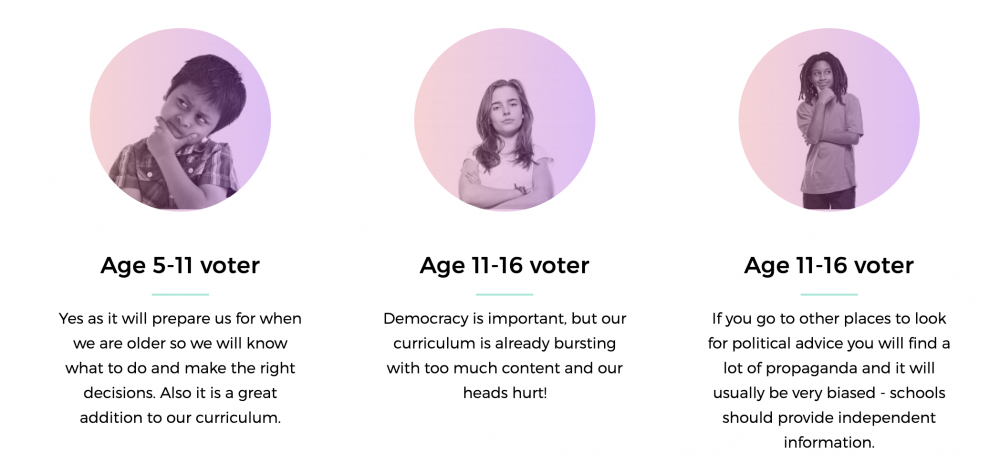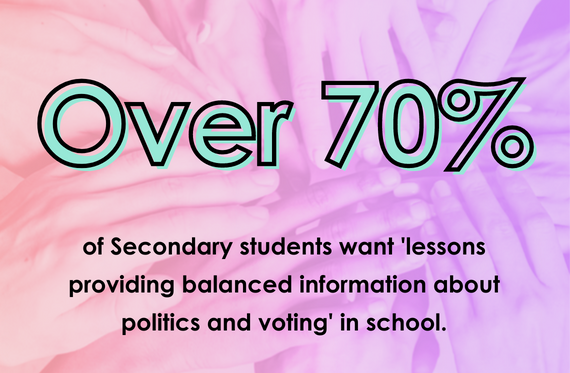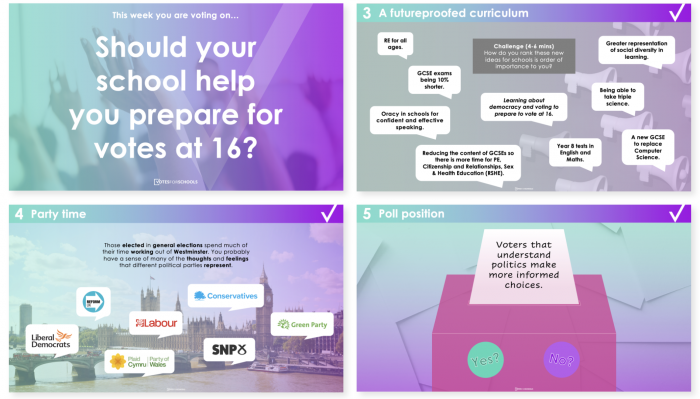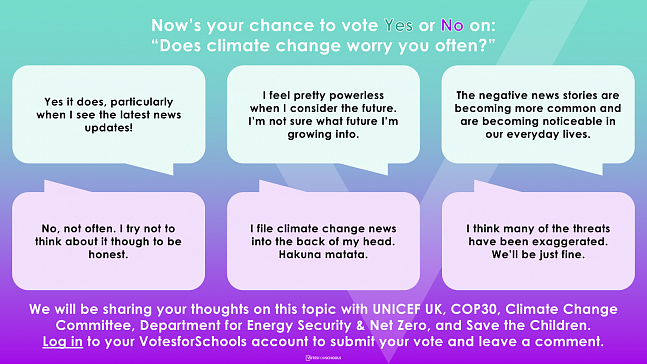If it happened tomorrow, would this be how your students approach it?
@mrjackskipper Gonna be calm styl #uk #election #comedy #relatable ♬ original sound - Jack Skipper
These kinds of clips are shared a lot when Votes at 16 is mentioned. Some see them as harmless jokes. Others argue they reflect real concerns about how prepared young people are to take part in democracy.
In our experience, it’s more mixed. Some students feel disconnected from politics, unsure how it relates to them. Others are keen to understand, ask questions, and get involved - but don’t always have the opportunity to do so.
With the voting age expected to drop by 2029, and registration beginning earlier, schools may be wondering what role they play in preparing young people for what’s ahead.
Why VotesforSchools works for votes at 16
VotesforSchools was built on the idea of abolishing political apathy in young people. A decision such as lowering the voting age to 16 is something we can’t be happier about - but also something we can’t turn a blind eye to.
Many of us didn’t hear the word "politics" until sixth form or college. For some, it was a quiet line in a general studies lesson; for others, it never came up at all. Yet by 17, the world was already being shaped by decisions we had no say in.
Now, with the potential of the voting age being lowered, registration will start as early as 14 (GOV.UK), to ensure young people can cast their vote the moment they’re eligible. And young people are keener than ever to learn about voting in the UK. In November 2025 we asked over 50,000 under 18s whether they thought schools should be teaching more about voting... spoiler: they said yes.

But wait… didn’t young people once say “no” to this?
They did! In a previous VoteTopic back in 2022, the majority of young people said they weren’t in favour of lowering the voting age. But what if that’s the very reason why this reform is so important?
If young people aren’t confident about voting, doesn’t that prove how urgent and necessary political education is?
Over 70% of young people told us they want balanced lessons on politics and voting in school, highlighting a strong desire for political education that helps them make informed choices.

Political literacy isn’t just about knowing when to vote - it’s about understanding why it matters. And if we want to raise a generation of informed, engaged voters, we have to start much earlier than 16.
Votes at 16: What's Changing?
This reform is part of a broader strategy to reclaim Britain’s democracy (Restoring Trust in Our Democracy). Here’s what the plan includes:
- Votes from 16 in all UK elections
- Registration available from age 14
- Better safeguards for looked-after children to register and vote
- Flexible forms of ID, including digital formats
- Coordination with schools and education departments for voter readines
how can you help young people prepare for votes at 16?
1. Keep consistent
Elections only happen every few years, but that doesn’t mean teaching about democracy should be squeezed into the final few weeks before polling day. Political education works best when it’s regular, not rushed.
That said, we know that carving out time for politics every day is unrealistic. You’re balancing full timetables, endless admin and ever-changing guidance. But even a small, regular slot can make a big difference. Giving students the chance to explore and revisit big issues helps them see that politics isn’t separate from their lives. It’s woven into all of it.
That could mean dedicating one form time a week to current events, asking students to explain a news story to the class, or giving them space to ask questions about what’s happening around them.
To get you started, we've made our most recent lessons about Votes at 16 completely free. They'll help your students discuss why we vote, what we vote for, and talk about whether voting is something they'd like to learn more about in school.

Download our award-winning lessons
2. Stay relevant
It’s not unusual for young people to think that politics isn’t “for them”. Some feel ignored by it, others don’t see people like them represented in it.
But once they start to notice how political decisions shape their lives - from school funding to online safety - things start to click. When we explore the issues they already care about, it opens the door to political thinking without even using the word “politics”.
At VotesforSchools, that’s our approach every week. We talk about misogyny, social media, climate, AI - and through that, students begin to explore what they believe, what they value, and how they want the world to look.
3. Remain realistic
We’re all used to getting things quickly, but politics doesn’t work that way. Change is slow. Progress is hard-won. And not every decision will feel fair or representative.
Helping students to understand this is important. Democracy doesn’t mean getting your own way - it means having the right to take part, even when the outcome isn’t what you hoped for.
It’s also a reminder that change is possible, even if it doesn’t happen overnight. Students need to hear that their input matters, even if it takes time to see results.
4. Find the balance
This is one of the trickier parts. As a teacher, you’ll naturally have views of your own, especially on issues that affect you and your students. But when it comes to political conversations, staying neutral is key.
Most schools will already have their own impartiality guidance. A helpful way to think about it is to act like the referee. You’re there to set the rules and keep things fair. That might mean stepping in if a student dismisses someone else’s view, or if misinformation is being shared. But mostly, it’s about giving students the space to think and speak for themselves.
By modelling how to have respectful, balanced discussions, you’re not just helping them in class. You’re also preparing them for the conversations they’ll have outside school, where they’ll need to stand by their views and think critically about the ones they hear.
5. Diversify dialogue
The more ways there are to join a conversation, the more likely students are to take part. That means going beyond just whole-class debates.
Some students might want to vote with their feet. Others may prefer writing their views down or designing a campaign poster. Creating space for different styles, strengths and opinions helps more young people feel seen and heard.
The same goes for the stories and examples we share. When students hear about people with different experiences and backgrounds, it helps them understand what democracy is really about, everyone having a voice.
If we want students to believe that politics is for them, they need to see it, hear it and feel it in the classroom first.
But are 16-year-olds ready?
That depends on us.
Many argue that 16-year-olds aren’t mature enough to vote. But in Scotland’s independence referendum, 16- and 17-year-olds had a higher turnout than 18-21-year-olds.
Still, results in Wales were mixed. Which is why the education element matters so much. Without it, this reform risks becoming a hollow gesture.
Final Thoughts
The UK formally moving to enfranchise 16- and 17-year-olds is a huge milestone. But giving rights is one thing - helping young people use them is another.
Political apathy is not innate. It’s taught - by omission, by silence, by underestimating young people. If we teach democracy properly, they won’t just vote. They’ll do it with clarity, conviction, and confidence.
It’s time we gave them the tools to do exactly that.



